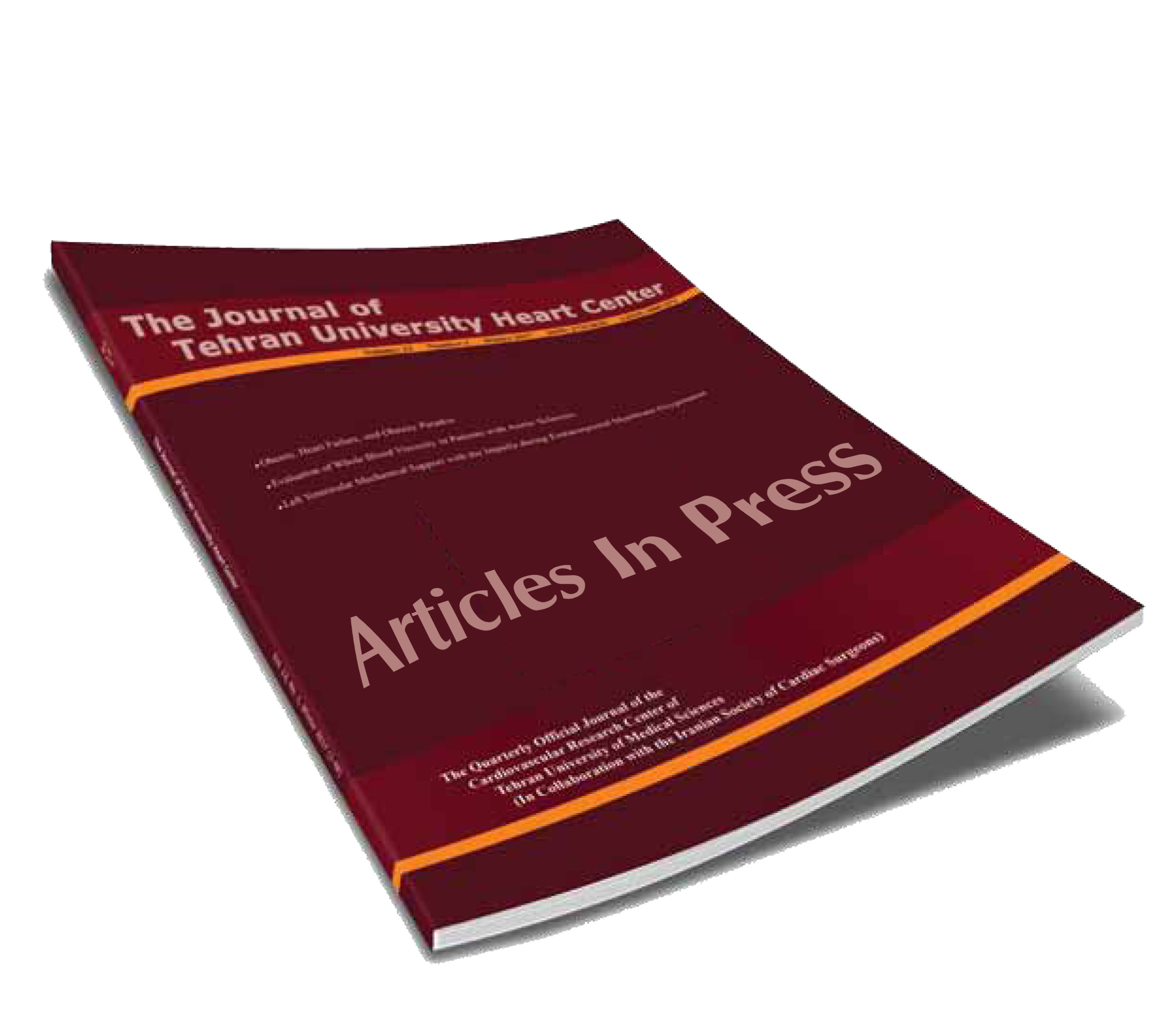Articles In Press
Case Report(s)
-
Background: Pregnancy in pulmonary hypertensive female patients is strongly contraindicated because of the high mortality rate according to physiological changes, especially in peri- and postpartum periods, and in case of occurrence, termination at an early stage is recommended. Therefore, our experience with continued pregnancies in patients with pulmonary hypertension are scarce.
Case presentation: This case report presents a young woman diagnosed with multiple bilateral pulmonary hydatid cysts and right ventricular hydatid cyst, who underwent surgical and pharmacologic treatments, but developed pulmonary hypertension due to pulmonary artery obstruction eight years after. According to the unsuitable condition of the patient for surgery, she was a candidate for medical therapy, including Tadalafil, Bosentan, and Eplerenone. After 3 years, despite the advice to avoid pregnancy, the patient got pregnant and at 37 weeks underwent a successful emergent cesarean section due to maternal dyspnea and tachycardia.
Conclusions: We believe that prompt treatment and regular follow-ups in a tertiary care center with a multidisciplinary approach would be crucial in the management of pulmonary hypertensive patients who get pregnant.
-
Infective endocarditis (IE) is an under-recognized cause of fever that is often missed in preliminary evaluation. This may stem from a lack of vigilance towards IE and using empirical antibiotic therapy to treat fever. As a result, patients often present with complications of IE that warrant surgical intervention. We hereby discuss a case of IE that remained undiagnosed for 2 years, receiving short courses of oral antibiotic therapy for recurrent fever, ultimately developing heart failure due to valve perforation.
-
Complete heart block in a patient with acute cholangitis due to the cardiobiliary reflex Cope's Sign
Gallbladder and biliary tract diseases may manifest as cardiac symptoms, ischemic ECG changes, and arrhythmias. Although rare, bradyarrhythmia cases induced by cardiobiliary reflex have been linked to acute cholecystitis. This case emphasizes the cardiobiliary reflex as a possible cause of bradyarrhythmia in patients with gallbladder and biliary tract diseases .
-
Background: In-stent restenosis (ISR) following percutaneous coronary intervention (PCI) is an unwanted complication in some patients. The etiology is multifactorial, and identifying these factors may help improve long-term outcomes after PCI.
Case summary: We hereby describe two cases of recurrent ISR; case 1 describes the techniques of PCI used over 17 years to manage recurrent ISR of Left Main bifurcation disease, while case 2 highlights the role of coronary artery bypass grafting (CABG) as a treatment modality for recurrent ISR of the right coronary artery.
Discussion: Management of post-PCI recurrent ISR has witnessed multiple advancements over the past decade. Newer technologies like intravascular imaging, plaque or calcium modification techniques, and drug-eluting balloons enable effective management of recurrent ISR. This article describes possible risk factors for recurrent ISR and discusses various treatment strategies for its management.
-
Background: A sinus venous atrial septal defect (SVASD) is a type of congenital heart defect that predominantly involves an opening between the Superior Vena Cava (SVC) and the Right Upper Pulmonary Vein (RUPV). Surgical closure of SVASD has been the standard treatment; however, the surgical closure of SVASD is far more complex than mere ASD secundum reconstruction, and complications are more likely. Transcatheter closure of SVASD is an emerging alternative for surgical repair.
Methods: We report five cases of successful transcatheter closure of SVASD and one case of failure that required surgical intervention. All patients underwent pre-procedure Computed Tomography Angiography (CTA) to determine the size and location of the defect and the optimal stent size and position. The SVC stenting was performed using balloon-expandable stents, followed by RUPV angioplasty if needed.
Results: Final angiograms and pressure measurements in the SVC, RUPV, and Right Atrium (RA) confirmed the absence of residual shunt and pulmonary venous obstruction. One patient experienced stent migration to the pulmonary artery, which necessitated surgical retrieval and defect closure.
Conclusion: The balloon expansion test is not mandatory before stent implantation, as in the case of RUPV obstruction, its flow could be reestablished by ballooning and/or stent implantation within the RUPV with a mild residual shunt which might resolve spontaneously.






